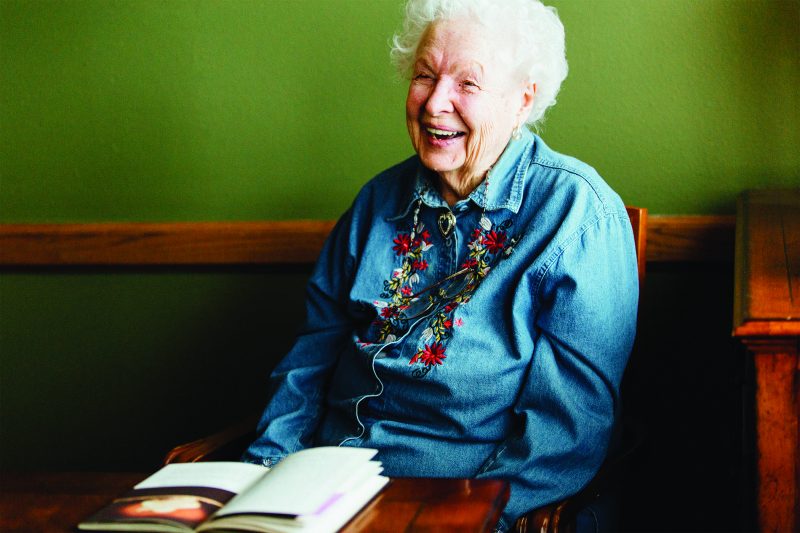How a Young Female Chemist was Part of the Manhattan Project
Text by Polly Kolstad and Photography by Sara Young
“I try to begin with a quote,” said Helen Yanuszka. “What would I say?”
“Oscar Wilde, ‘the mind is a diary of memories, some fade, not like a writing, that you can tear out of a page.'”
Yanuszka’s thoughts, calculated and collected, have hardly dimmed even into her nineties. She’s a quiet headliner in her own right, though not an open book, until she verbally pages through decades of her life. And then, there is no shortage of source material especially when she recalls the 1940s; that part of her work was so concealed, even she didn’t know what she was doing.
Her “nuggets of the past” are compelling.
She knew the slogan: “Loose lips, sink ships,” which indicated there was no conversing about your employment experience or what you did.
“It was unbelievable, she says. “Even at that, a Russian spy penetrated our working ranks.” Those secrets that Yanuszka kept had to do with the Manhattan Project and the development of the Atomic Bomb. Even though she never heard it referred to as that in the lab, certain events surfaced after the bomb was dropped on Hiroshima. The project (Manhattan) was so secret that President Roosevelt never informed Truman of the work being carried out.
“I was a small part of a project that was huge. I was twenty-five.”
At age twenty, Yanuszka graduated from Hunter College, in New York. It was 1943 and she majored in chemistry with a biology minor, unusual for a woman at the time.
Her first job, with a Mr. Van Doren, offered her a position as a lab tech. He told her he couldn’t tell her what the job would be or where; just something involved with working for the government. She would receive $40 per month. (at a $1.00 an hour)
She marveled at the prospect of such a paycheck. “I was so pleased to tell my mother.” In that day, girls did well to make $18 a week.
Yanuszka was sent to work for the Kellex Corporation, a wholly owned subsidiary of M.W. Kellogg. “That would be the children’s cereal,” she pauses to explain. “Mr. Kellogg took the first part of the name and added ‘x’ for secret.”
Kellex was charged with developing a process for gas extraction techniques that could be effectively applied to the separation of uranium.
The Kellex Company was located in New Jersey, a daily train ride away for Yanuszka.
Soon, they quietly moved to a converted lab in a Nash garage building in New York across the street from Columbia University.
At that location, Kellex was consigned to develop a mesh barrier material that was resistant to corrosion by uranium for K-25 (a gaseous diffusion).
Pausing to reflect, she considers that at the time secret developments were going on at other sites: Oakridge,Tennessee; Hanover, Washington; Argonne, Illinois; and Los Alamos, New Mexico. Then, Union Carbide took over from Kellex, and Yanuszka worked in library research for them. From there, she went to Sloan-Kettering for cancer research in New York.
Counterparts to her stories are enriched by notable people.
Working in her office one day, she ran into Admiral Hyman Rickover, who directed the original development of naval nuclear propulsion.
“At the time he was a Captain. I met him at New York University in Greenwich Village when I was working on the Manhattan Project. I was there an hour early for work, so we went and had ice cream.” Though her interest was in science, “it was a man’s field for jobs.”
“In our lab, men predominated. If you look at the pictures from that time, all men working; not many women. I was given certain lab tasks during the war involving technology and testing a variety of materials, yet, I worked primarily with men.”
When asked if she has commemoratives from that time, she brings forth a framed certificate from the United States of America Army Corps of Engineers, Manhattan District that reads: “Helen Yanuszka has participated in working essential to the production of the Atomic Bomb and thereby contributed to the successful conclusion of WWII. Appreciation of effective service, August 6, 1945, signed Secretary of War, Henry Stimson.”
She was on vacation the day the bomb dropped: August 6, 1945. It came over the radio: the Atomic Bomb had dropped on Hiroshima. Both her husband, and her brother were in the military. Her husband, Stephen was a captain in the Coast Guard stationed in Africa and then, Salerno, Italy.
After the war, Yanuszka continued to move through a number of scientific fields including doing research for Union Carbide and Carbon Corporation looking up materials on coal hydrogenation.
Eventually retiring, Yanuszka moved west to be close to her son, Steven, and daughter-in-law, Barbara, in 1985. She has been a resident of Great Falls since that time.
